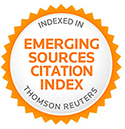Colocaciones de "Hombre" y "Mujer" en noticias en línea en español: una mirada crítica a la representación de género
Resumen
Este estudio utiliza técnicas de la lingüística de corpus para investigar cómo se representan hombres y mujeres en las noticias en línea en español. La investigación explora los patrones de colocaciones verbales de los lemas HOMBRE y MUJER dentro del corpus NOW. Los hallazgos indican que ciertos verbos, como "discutir", "mentir", "amenazar" y "gritar", están más estrechamente asociados con los hombres, mientras que verbos como "protestar", "callar" y "alegar" están más vinculados a las mujeres. Estos patrones reflejan las dinámicas de género en el lenguaje y se alinean con investigaciones en inglés que muestran una asociación más fuerte entre los hombres y acciones violentas. Por otro lado, el verbo "morir" aparece más frecuentemente con HOMBRE, y MUJER con "fallecer", el cual, a diferencia de “morir”, lleva consigo matices emocionales y de respeto. Además, el estudio revela la colocación exclusiva de "fracasar" con HOMBRE y "triunfar" con MUJER, arrojando luz sobre las expectativas de logro de ambos géneros. Es notable también que los verbos "lidiar" y "enfrentar" ocurren de manera única con MUJER, lo que sugiere una conexión entre las mujeres y el manejo de situaciones difíciles. Este análisis léxico subraya la intrincada interacción entre lenguaje, género y percepciones sociales, enfatizando la necesidad de un análisis e investigación continuos para revelar y desafiar los estereotipos de género y las dinámicas de poder arraigadas en el lenguaje.
Recibido:20/02/2025 - Aceptado:20/04/2025
Texto completo:
PDFReferencias
Alochis,I.2016.La representación de la violencia sexual contra las mujeres y las niñas en el léxico y en la construcción discursiva de las noticias en un estudio de caso en la prensa gráfica de Córdoba.Coloquio interdisciplinario internacional “Educación sexualidades y relaciones de género”, Universidad Nacional de Córdoba, Argentina. Retrieved from https://rdu.unc.edu.ar/bitstream/handle/11086/20777/EJE_2.pdf
Baker,P.2010.Sociolinguistics and corpus linguistics.Edinburgh University Press.
Baker,P.2012.Corpora and gender studies.In K.Hyland,C.Meng Huat,& M.Handford(eds.),Corpus Applications in Applied Linguistics,100-116.London:Bloomsbury Publishing.https://doi.org/10.1007/978-3-319-41733-2_14
Baker,P.2010.'Will Ms ever be as frequent as Mr?A corpus-based comparison of gendered terms across four diachronic corpora of British English.Gender and Language 4.1. 125-149.https://doi.org/10.1558/genl.v1.i1.17188
Baker,P.201.Using corpora to analyze gender.London:Bloomsbury Academic.https://doi.org/10.1017/s0047404515000093
Baker,P.,& Brookes,G.2021.Lovely nurses,rude receptionists, and patronising doctors. In J. Angouri & J.Baxter(eds.),The Routledge Handbook of Language,Gender,and Sexuality 559-571.New York:Routledge.https://doi.org/10.4324/9781315514857-45
Bastian,M.,Heymann,S.,& Jacomy,M.2009.Gephi: An open source software for exploring and manipulating networks.Proc.International AAAI Conference on Weblogs and Social Media,361-362.https://doi.org/10.1609/icwsm.v3i1.13937
Brezina,V.2018.Statistics in corpus linguistics:A practical guide.Cambridge:Cambridge University Press.https://doi.org/10.1017/9781316410899
Caldas-Coulthard,C.R.,& Moon,R.2010.‘Curvy,hunky,kinky’:Using corpora as tools for critical analysis.Discourse & Society,21.2.99-133.https://doi.org/10.1177/0957926509353843
Castillo,M.N.2019.¿Qué se dice de la mujer y el hombre en el español de Chile?:estudio exploratorio de las combinaciones frecuentes de los vocablos mujer y hombre en un corpus de referencia estratificado.Boletín de filología,54.1.95-117.Retrieved from https://boletinfilologia.uchile.cl/index.php/BDF/article/view/53530
Chuaikun,D.,& Wijitsopon,R.2021.A corpus-based study of LGBT-related news discourse in Thailand’s and international English-language newspapers.Applied Linguistics Review.0.000010151520210036.https://doi.org/10.1515/applirev-2021-0036
Coates,J.2015.Women,Men and Language:A sociolinguistic account of gender differences in language.London:Routledge.https://doi.org/10.4324/9781315645612
Davies,M.2019.The corpus del Español NOW(news on the web).http://www.corpusdelespanol.org/now.
Eagly,A.H.,& Wood,W.2012.Social role theory.Handbook of theories of social psychology 2.458-476.
Flowerdew,J.,& Richardson,J.E.(eds.).2017.The Routledge Handbook of Critical Discourse Analysis.New York:Routledge.https://doi.org/10.4324/9781315739342
García-Miguel,J.,& Albertuz,F.2005.Verbs,semantic classes,and semantic roles in the ADESSE project.In Proceedings of the Interdisciplinary Workshop on the Identification and Representation of Verb Features and Verb Classes 50-55.University of Vigo.
Heritage,F.2020.Applying corpus linguistics to videogame data: Exploring the representation of gender in videogames at a lexical level.Game studies 20.3.1-48.
Horton,R.H.2018.A corpus analysis of girls and boys in spoken academic English and teaching activities to raise awareness about gendered discourse.TESOL Working Paper Series 16.1-18.
Hyland,K.,Chau,M.H.,& Handford,M.2012.Corpus applications in applied linguistics.London:Bloomsbury Publishing.
Jensen,S.Q.2011.Othering,identity formation,and agency.Qualitative Studies 2.2.63-78.https://doi.org/10.7146/qs.v2i2.5510
Karimullah,K.2020.Sketching women:a corpus-based approach to representations of women's agency in political Internet corpora in Arabic and English.Corpora 15.1.21-53.https://doi.org/10.3366/cor.2020.0184
Kendall,S.,& Tannen,D.2015.Discourse and Gender.In D.Schifrin,D.Tannen,& H.Hamilton(eds.),The Handbook of Discourse Analysis,639-660.Malden,MA:Wiley Blackwell.https://doi.org/10.1002/9781118584194.ch30
Krendel,A.2020.The men and women, guys and girls of the ‘manosphere’:A corpus assisted discourse approach.Discourse & Society 31.6.607-630.https://doi.org/10.1177/0957926520939690
Litosseliti,L.2014.Gender and language theory and practice.London:Routledge.
Mautner,Gerlinde.2007.Mining large corpora for social information:The case of elderly.Language in Society 36.1.51-72.https://doi.org/10.1017/S0047404507070030
McEnery,A.,& Baker,P.(Eds.).2015.Corpora and discourse studies:Integrating discourse and corpora.Lancaster:Palgrave.
McEnery,T.,& Hardie,A.2011.Corpus linguistics:Method, theory and practice.Cambridge University Press.
Moon,R.,2014.From gorgeous to grumpy:Adjectives,age,and gender.Gender & Language 8.1.5-41.https://doi.org/10.1558/genl.v8i1.5
Norberg,C.,& Johansson,M.2021.“Women and ‘ideal’ women”:The representation of women in the construction industry.Gender Issues 38.1.1-24.https://doi.org/10.1007/s12147-020-09257-0
Norberg,C.2016.Naughty boys and sexy girls:The representation of young individuals in a web-based corpus of English.Journal of English Linguistics 44.4.291-317.https://doi.org/10.1177/0075424216665672
Pearce,M.2008.Investigating the collocational behavior of man and woman in the BNC using Sketch Engine.Corpora 3.1.1-29.https://doi.org/10.3366/E174950320800004X
Romaine,S.2000.Language in society:An introduction to sociolinguistics. OUP.
Sigley,R.,& Holmes,J.2002.Looking at girls in corpora of English.Journal of English Linguistics 30.2.138-157.https://doi.org/10.1177/007242030002004
Taylor,C.2021.Investigating gendered language through collocation.In J.Angouri & J.Baxter(eds.),The Routledge Handbook of Language,Gender,and Sexuality,572-586.London:Routledge.https://doi.org/10.4324/9781315514857-46
Tsapro,G.,& Semeniuk,A.2021. Discursive presentation of women in the 2001-2002 and 2020-2021 media texts:A corpus-based analysis.Studia Philologica 1.https://doi.org/10.28925/2311-2425.2021.168
Weatherall,A.2005.Gender,language,and discourse.New York:Routledge.
West,C.,& Zimmerman,D.H.1987.Doing gender.Gender & Society 1.2.125–151.https://doi.org/10.1177/0891243287001002002
Widdowson,H.G.2004.Text,context,pretext:Critical issues in discourse analysis. Oxford: Blackwell.
| Se encuentra actualmente indizada en: | |||
 |  |  | |
 |
|  | |
 |  |
| |
![]()
Todos los documentos publicados en esta revista se distribuyen bajo una
Licencia Creative Commons Atribución -No Comercial- Compartir Igual 4.0 Internacional.
Por lo que el envío, procesamiento y publicación de artículos en la revista es totalmente gratuito.

